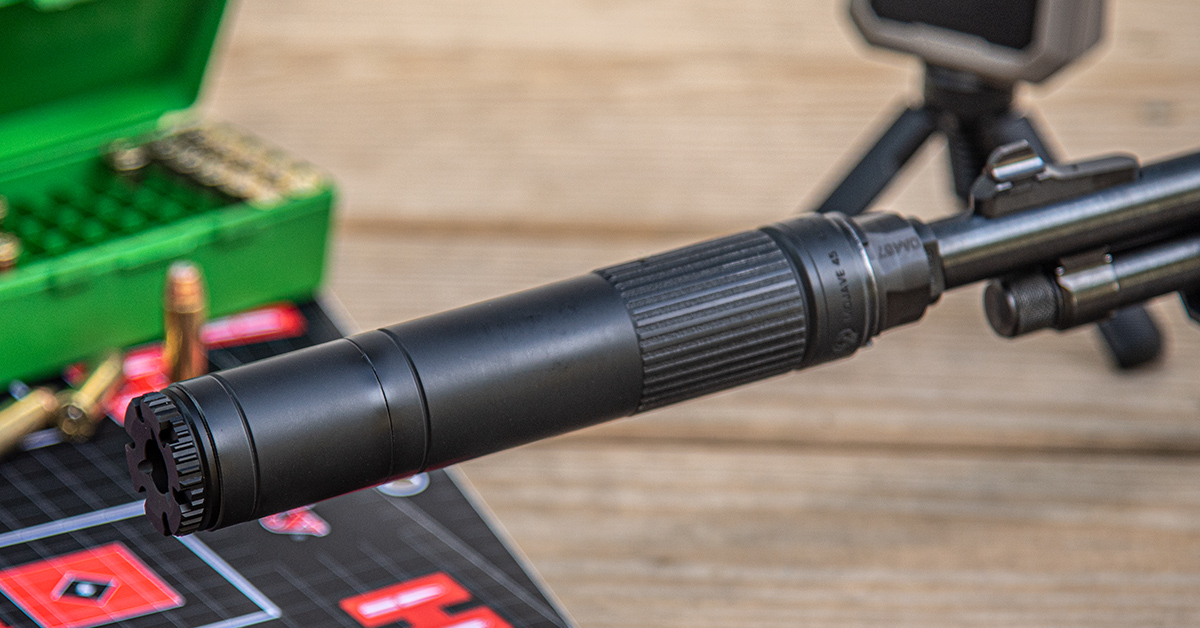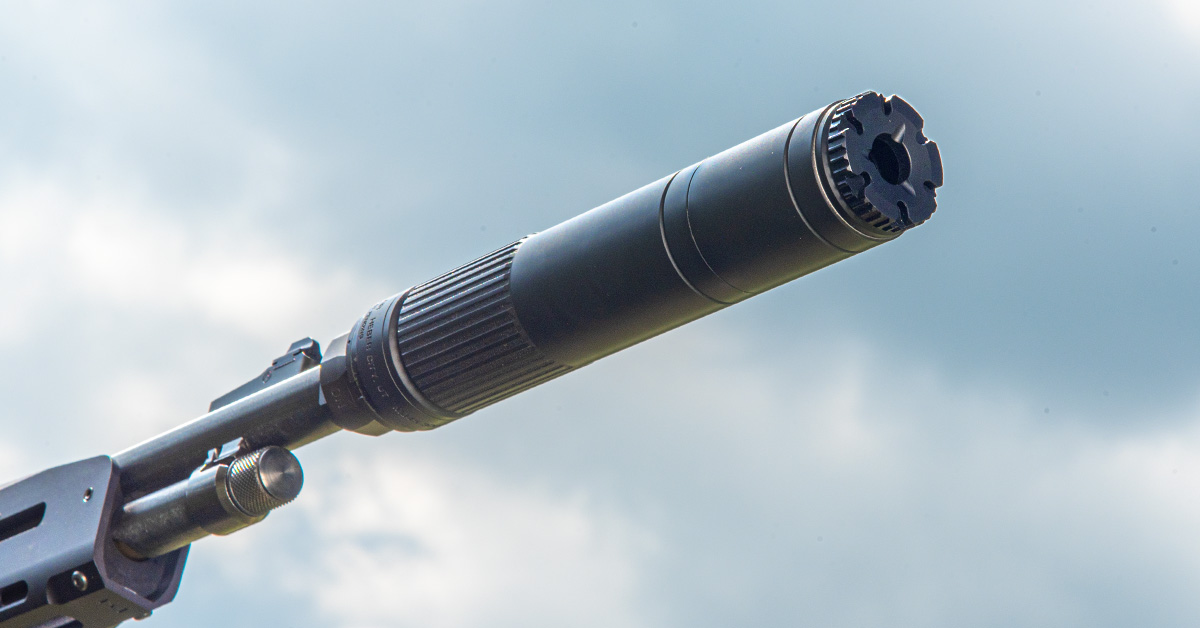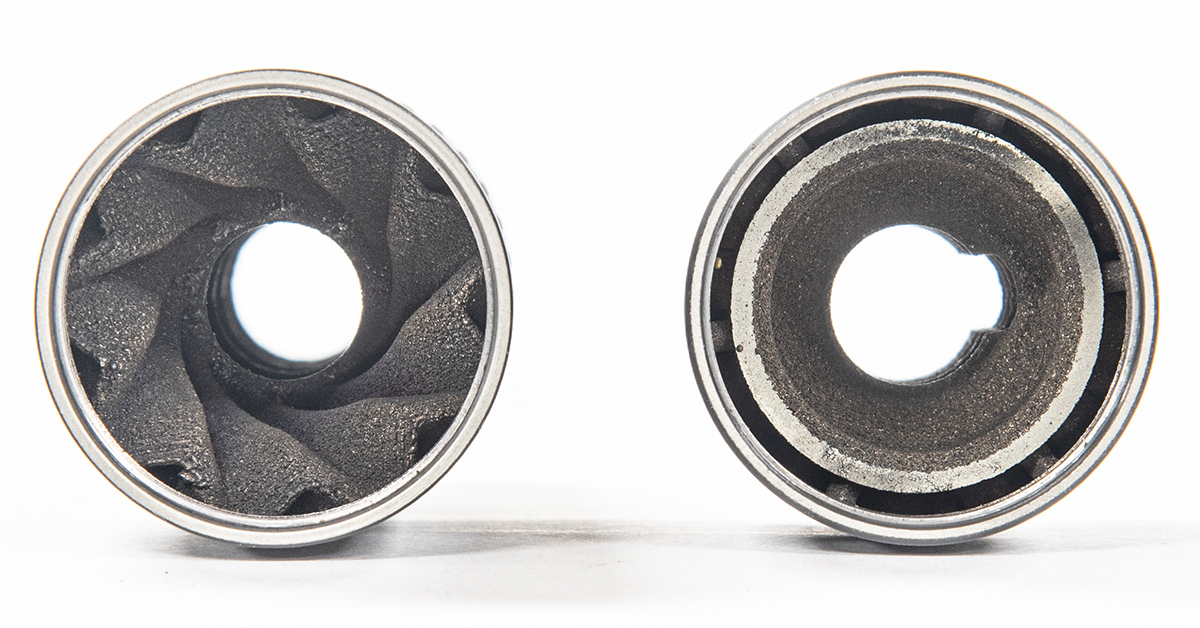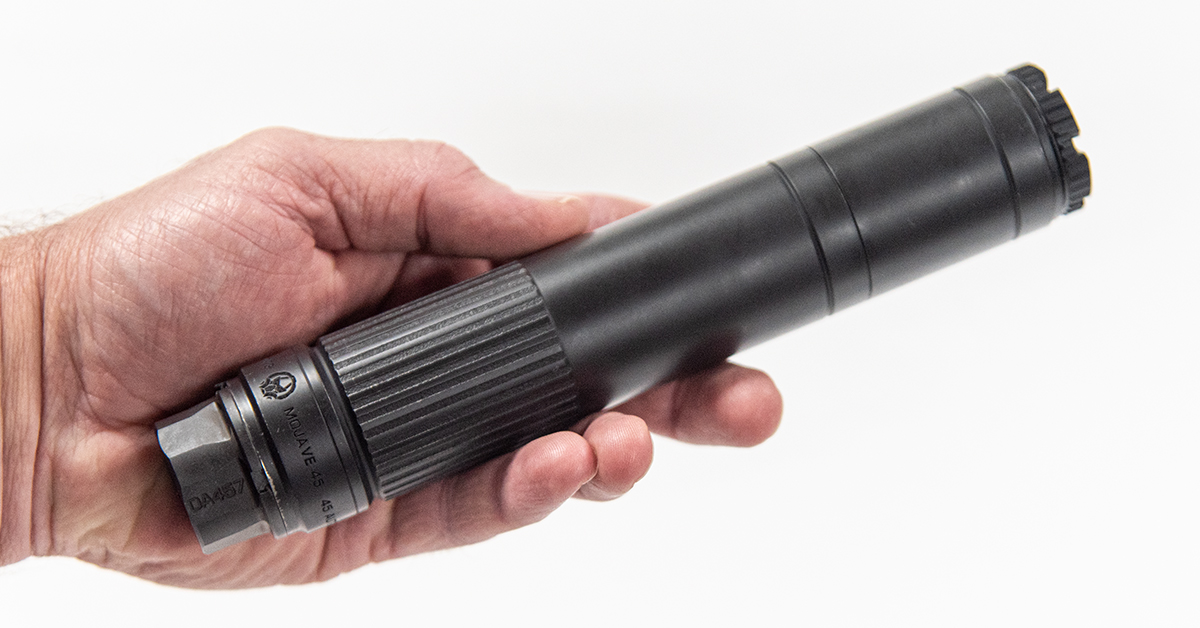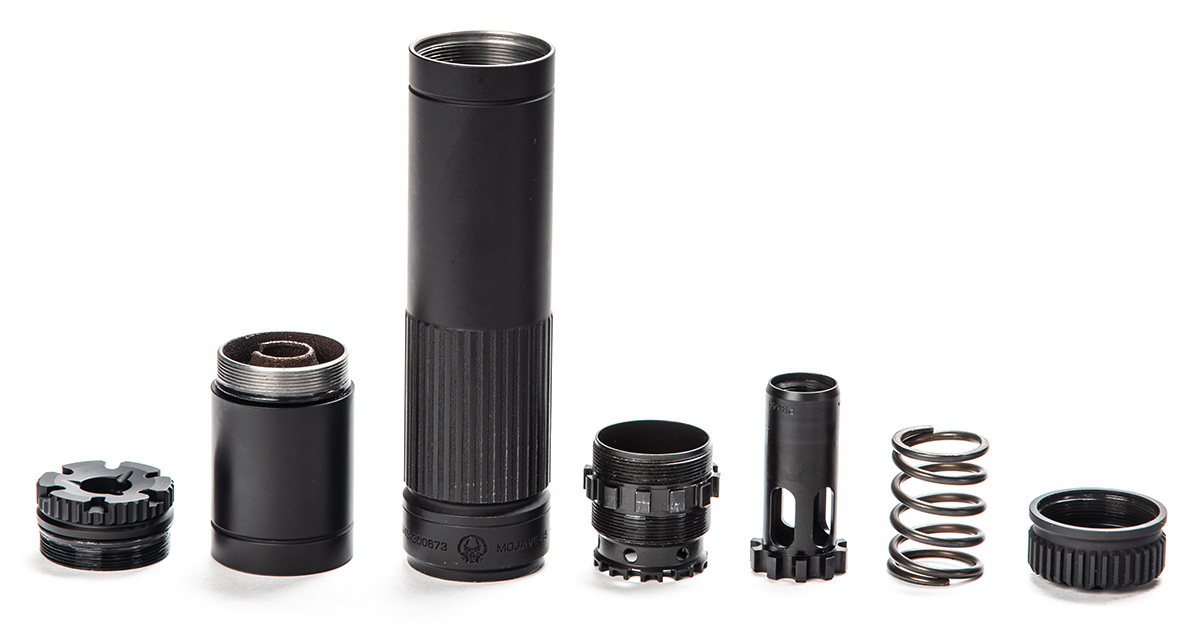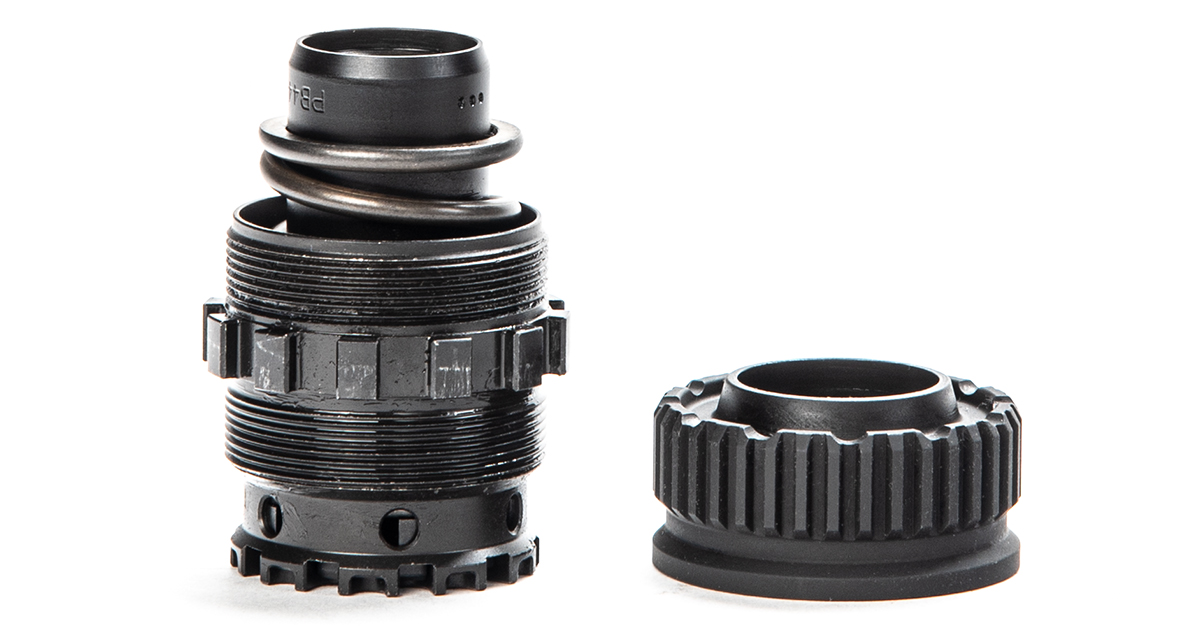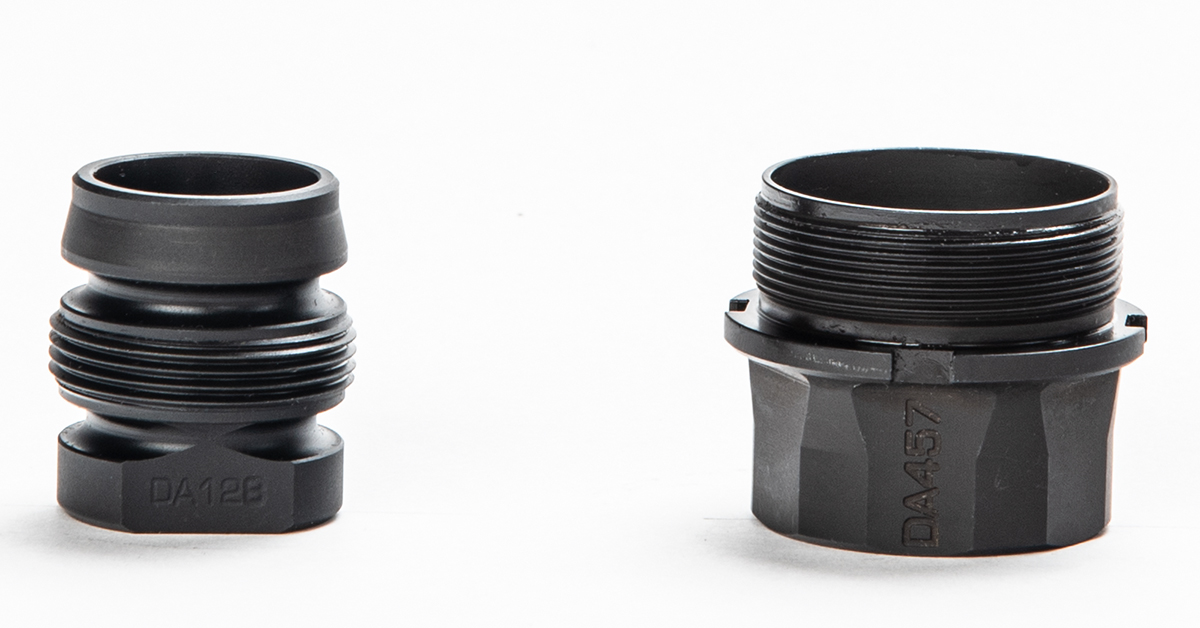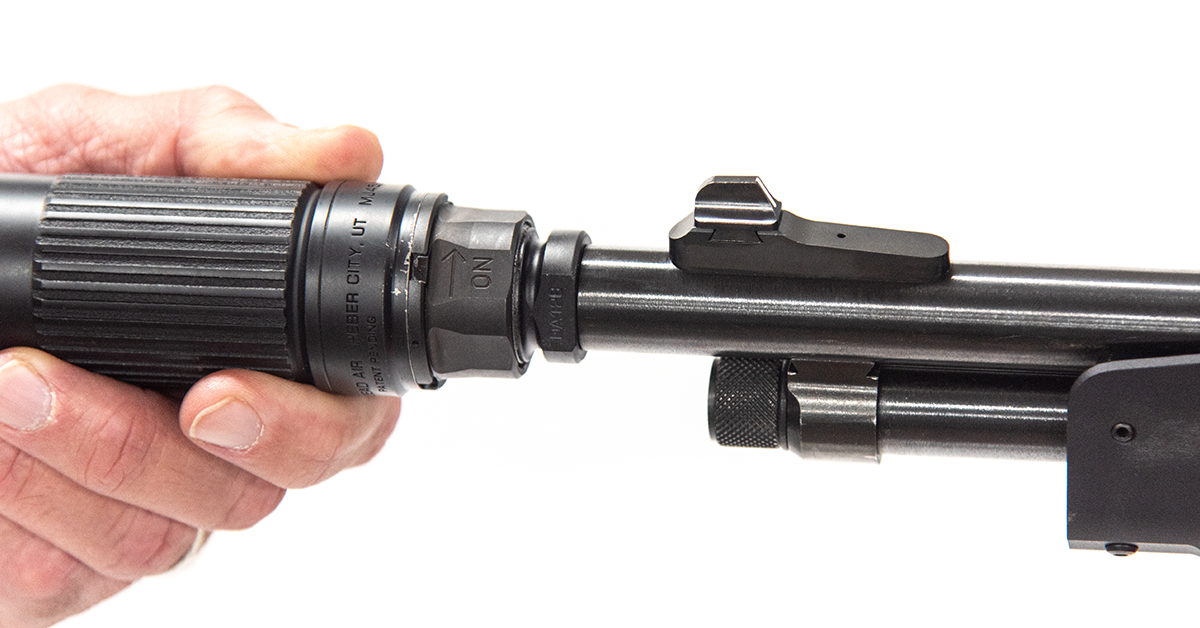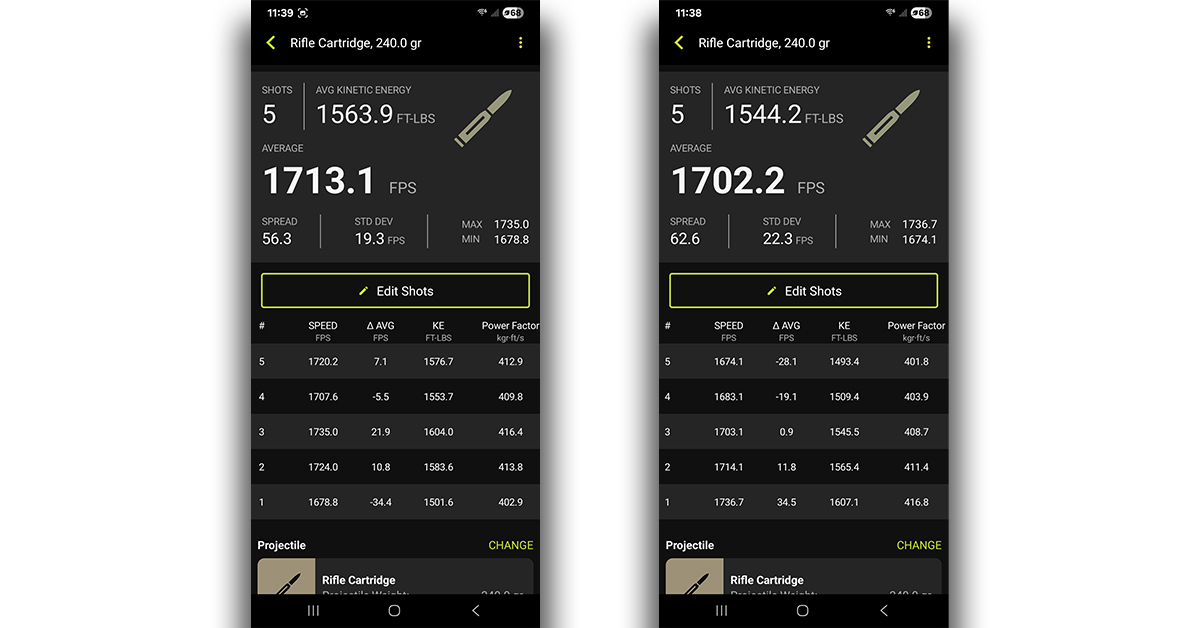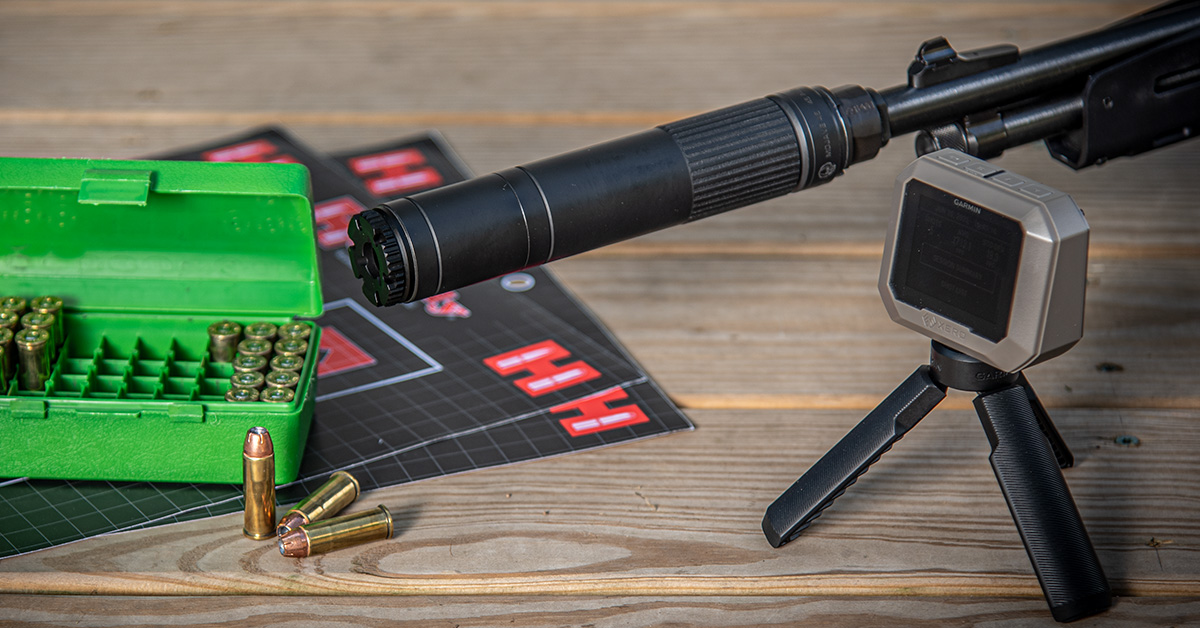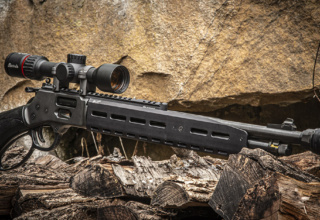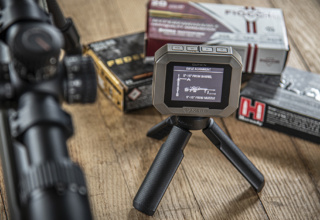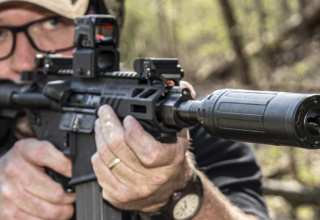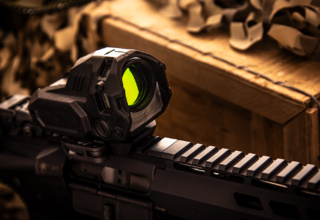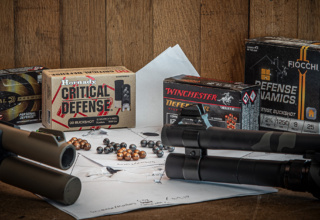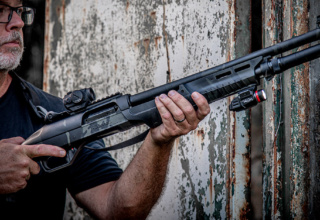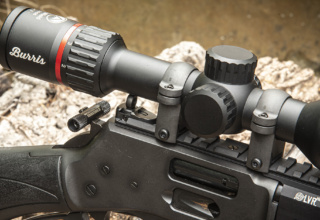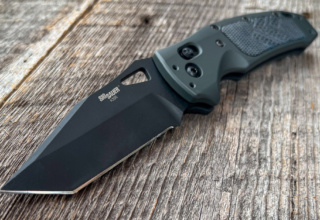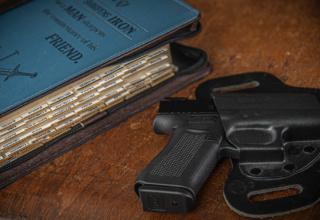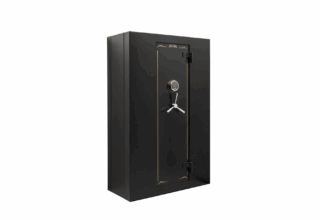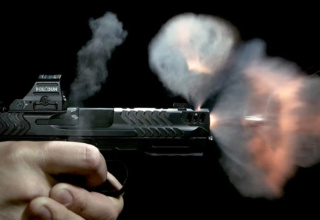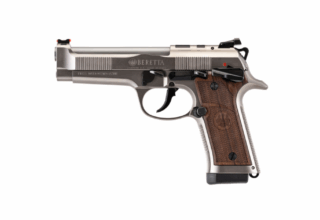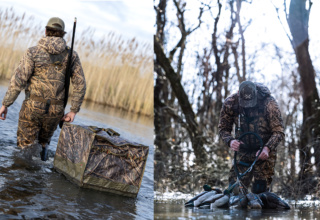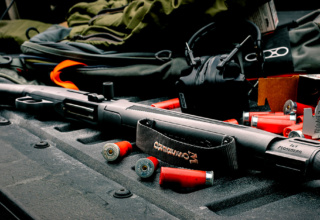Whether you want to run a pistol or lever-action rifle, Dead Air’s new Mojave 45 is a lightweight, highly configurable, and diverse suppressor with delicious sound performance
by Rob Reaser
This has been, so far, quite a notable year for suppressor manufacturer Dead Air Silencers. The company recently joined forces with firearm manufacturing legend Ruger to develop platform-specific suppressors for the latter’s popular 10/22-based firearms (stay tuned for our 10/22 build project and review of the RXD22Ti suppressor) and their larger-caliber hunting rifles (RXD30Ti suppressor). Prior to that, Dead Air announced the new Sandman X suppressor — the next evolution in the vaunted Sandman-series suppressors (see our review) — as well as the all-new Mojave 45 suppressor, which is the subject of this review.
Multi-Platform Compatible
The Mojave 45, as the name hints, falls into Dead Air’s pistol suppressor category, and represents a continuation of the innovative design and manufacturing process established with the company’s previously released Mojave 9 suppressor. It is rated for up to .45 Auto and, given its pistol designation, includes a piston, or booster, assembly for use with tilt-barrel pistols. The suppressor is also compatible with fixed-barrel pistol designs, so whatever your flavor, the Mojave 45 is ready to work.
And there’s good news for lever-action fans. The Mojave 45 easily conforms to the increasingly popular lever-action carbines chambered for .357 Magnum and .44 Magnum. Simply remove the booster assembly and secure the suppressor to the muzzle via the appropriate adapter and mount combination.
Because pistol suppressors are not “carry friendly” and since all my pistol range work involves training or testing and not recreational shooting, I have little interest in pistol suppressors. But suppressors on a defensive or hunting carbine…now you’re singing my song. And that is the reason I jumped on the Mojave 45.
When we recently upgraded a Henry Big Boy X in .44 Magnum with XS Sights’ new Henry LVR-HG handguard and Burris’ new Fullfield 2-8×35 riflescope, fitting the carbine with the Mojave 45 was a no-brainer. The suppressor’s sound mitigation combined with its light weight and modularity made it a pleasure to shoot and confirmed it for the whitetail hunting duties for which it will be tasked this fall.
So, what makes this a standout suppressor in an increasingly crowded field of black cans? Let’s dive in…
Tuned Sound Suppression
We’ll begin with the feature that makes suppressors so valuable to shooters: sound suppression.
A couple seasons ago, I used this rifle and handloads topped with Hornady 240-gr. XTP bullets to add a nice 7-pt. whitetail buck and a fat doe to the freezer. While I have been trying in recent years to remember to use ear protection when hunting, it isn’t always possible to slip them on before the shot. Such was the case when I took both these deer; and I must say, the sharp report of both shots really hurt my ears. In fact, it seemed to hurt significantly more coming out of this carbine than the reports of my .270 or .30-06 Remington 700s. Just plain OUCH!
While testing the Mojave 45 with the same rifle at the bench, I took several shots without ear protection just to gauge the difference. And what a difference it was. Yes, the supersonic boom remains unabated, but the muzzle blast proved negligible to my unprotected ears. Although I wouldn’t want (and don’t recommend) a steady diet of shooting suppressed without ear protection, for the occasional shots taken in the hunting fields, the Mojave 45 used with this rifle/ammo combination solves the problem.
Additive Manufacturing
In short, the Mojave 45’s acoustics are first-rate. Credit this performance to Dead Air’s innovative Triskelion gas management system.
As you can see, the Triskelion system is quite unlike traditional cone baffle systems. It has a vortex-like design that directs gas along the suppressor body in a spiral fashion. This highly efficient design channels more gas forward so there is a relative reduction in backpressure and fewer particulates to come back through the gun. The result is cleaner overall operation and a more comfortable shooting experience since less junk is directed back toward the shooter.
The only way the Triskelion design can be made manifest — due to its internal complexity — is through additive manufacturing, also known as DMLS, or 3D, printing. In other words, this tuned, high-flow gas system design cannot be achieved through conventional machining and welding techniques. This manufacturing process opens options that bring their own inherent advantages to the suppressor.
Lighter, Stronger, Balanced
The Direct Metal Laser Sintering (DMLS) process allows for various metals to be used to construct a printed piece. In the case of the Mojave 45 suppressor, Dead Air selected titanium for the material construction. Titanium, of course, is a tough, light metal ideally suited for items like suppressors.
Weight has always been a compromising issue with suppressors — especially when employed on a handgun or a field rifle. Adding weight to a firearm’s muzzle not only adds to carry stress but also disrupts overall balance, which is particularly problematic with pistols. By using titanium, Dead Air has managed to bring down the Mojave 45’s overall weight to a mere 12.7 ounces in its longest configuration and 10.44 ounces in the shortened configuration. That’s impressive for a suppressor measuring 8.6 in. (long) and 6.812 in. (short).
Multiple Configurations
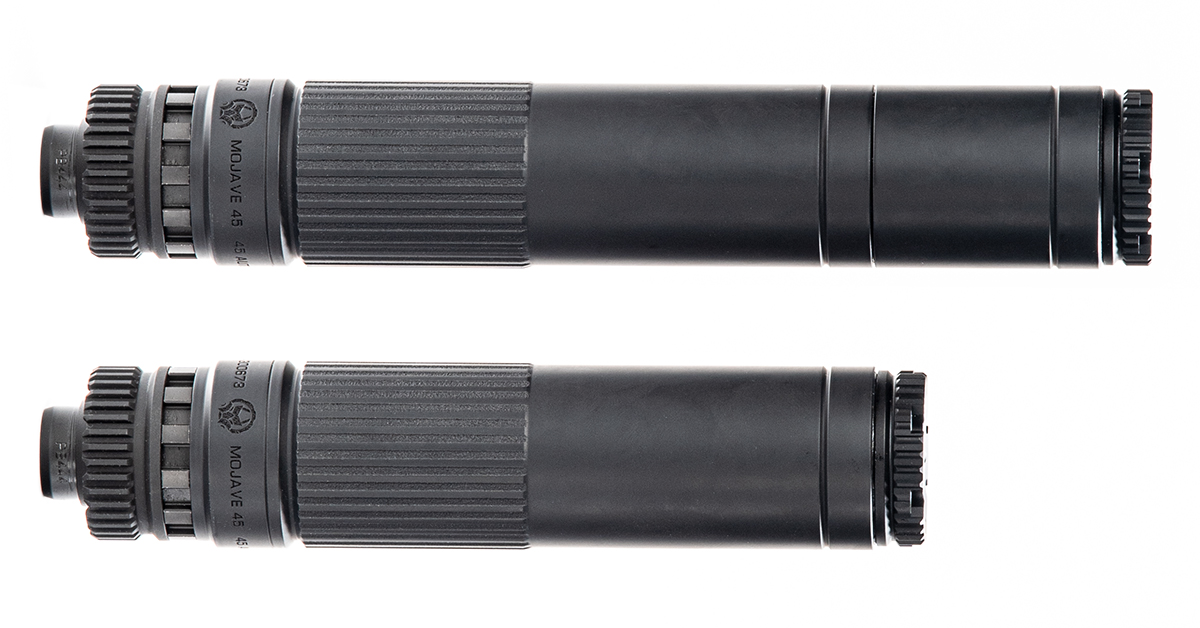
As mentioned, the Mojave 45 can be used in two configuration lengths. The extended length is preferable when maximum sound suppression is the goal. If you are looking to minimize weight or prefer the shorter length for optimal balance in a handgun, it’s a simple matter to unscrew the cap, unscrew the shorter front module, and install the cap on the suppressor’s rear module.
Here you see the Mojave 45 broken down to its component pieces. Disassembly for custom configuration or maintenance is super easy. Just be sure to keep the threads lubricated. From left to right there is the aluminum front cap, titanium front module, titanium rear module, booster housing, piston, piston spring, and back cap.
The booster assembly provides the necessary counterbalance to ensure proper cycle of operation when using the suppressor on a tilt-barrel pistol. For fixed-barrel pistol use, this can be replaced with a fixed-mount available from Dead Air.
Multiple Platforms
Whether you choose to run the Mojave 45 on a tilt- or fixed-barrel pistol or a long gun, the suppressor offers a lot of compatibility. It works with Dead Air’s P-series mounting systems and the Xeno and KeyMicro adapter and mount systems.
This is where things can get a bit confusing for the beginner suppressor user because of the many mount and adapter combinations and sizes. Once you understand how the system works, things go a bit smoother. Until then, it’s best to contact Dead Air directly so they can help you define the attachment system and components you need.
For the Henry lever-action rifle, the adaptation proved rather straightforward. The rifle’s muzzle thread is 5/8×24, so I chose the Xeno Xero threaded taper mount (left, PN #DA128). This secures to the barrel with around 25-35 ft/lbs of torque. The Xeno Adapter (right, PN #DA457) screws into the base of the suppresser after the booster assembly has been removed.
The mount and adapter utilize left-hand threads, so simply rotate the Mojave 45 counterclockwise onto the adapter, snug hand-tight, and you’re ready for the range or field.
On the Bench
As I mentioned earlier, the Mojave 45’s sound suppression performance earned a solid A+ with the Henry Big Boy X .44 Magnum and handloaded ammo. It eliminated the sharp, ear-piercing report I’d become familiar with when using this rifle and ammo combo. My auditory organs rejoiced! The question now became, what would it do to my ballistics?
To find out, I made two five-shot tests — one five-shot round was unsuppressed and the second round was suppressed.
To clock the velocity, I used Garmin’s incredible Xero C1 Pro Chronograph. The handloaded ammo included Hornady 240-grain .44 Magnum XTP bullets fueled with 23.9 gr. of Win 296 powder.
5-Shot Velocity Test (unsuppressed)
- Average Velocity: 1702.2 fps
- Average Energy: 1544.2 ft-lbs
- Standard Deviation: 22.3 fps
- Power Factor: 408.5
5-Shot Velocity Test (suppressed)
- Average Velocity: 1713.1 fps (+10.9 fps)
- Average Energy: 1563.9 ft-lbs (+19.7 ft-lbs)
- Standard Deviation: 19.3 fps
- Power Factor: 411.2 (+2.7)
Although a marginal increase, I was pleased to see that the Mojave 45 definitely boosted bullet velocity and, thus, impact energy. Every bit helps in defense and hunting applications.
When I shot those two deer a couple seasons ago with this same gun (unsuppressed) and ammo, the results were decisive. I double-lunged the buck at around 65 yards; he was down in less than 100 yards. The doe was a 20-yard shot, double-lunged, and she didn’t go 50 yards. I have no doubt that the Dead Air Mojave 45 will help deliver just as impressive results this season, and it will do so without leaving my ears ringing.
Dead Air Mojave 45 Specifications
- Silencer Type: pistol, rifle compatible
- Caliber Rating: Full-Auto – pistol calibers up to .45 AUTO, no barrel length restrictions; .300 BLK subsonic with 8-in. barrel. Semi-Auto – .300 BLK supersonic, .350 Legend, .400 Legend subsonic, .450 Bushmaster subsonic. Lever-Action – .357 Mag, .44 Mag with 16-in. barrel.
- Energy Rating: 1900 ft-lbs
- Length: 8.6 in. (long), 6.812 in. (short)
- Diameter: 1.48 in.
- Weight: 12.7 oz. (long), 10.44 oz. (short)
- Materials: titanium
- Finish: black or FDE Cerakote®
- Mount: .578-28 Mojave Piston (included)
- MSRP: $1099
- Barrel Restrictions: none
- Full Auto Rated: Yes

